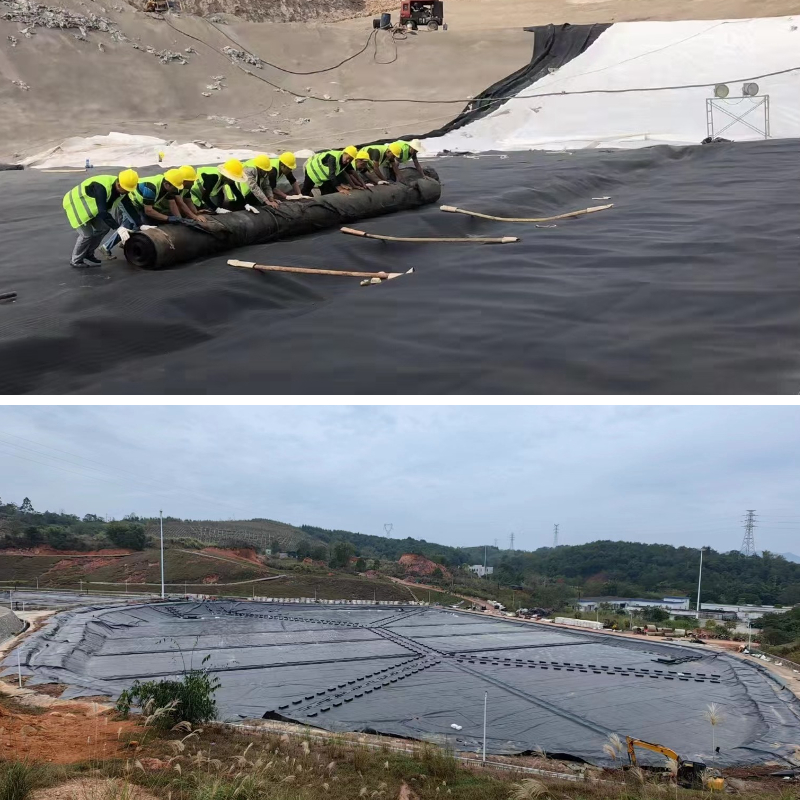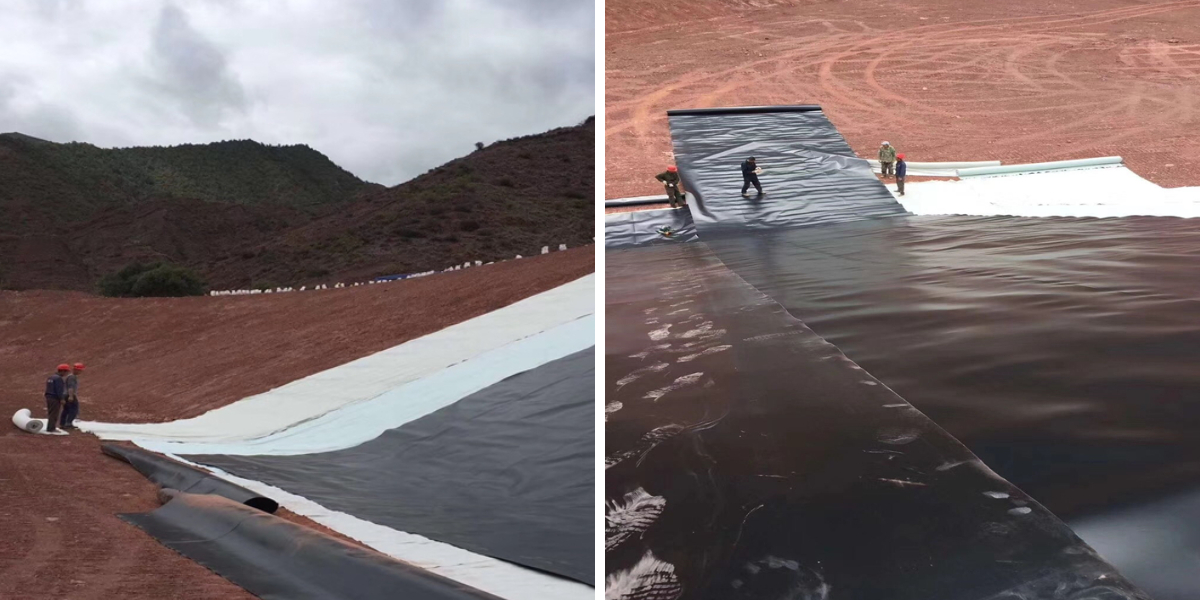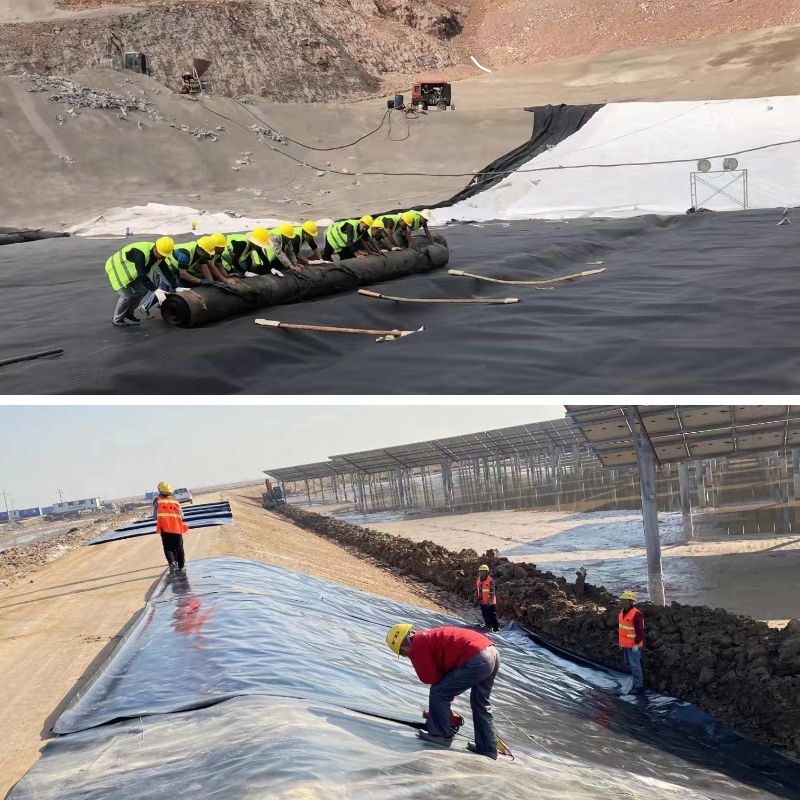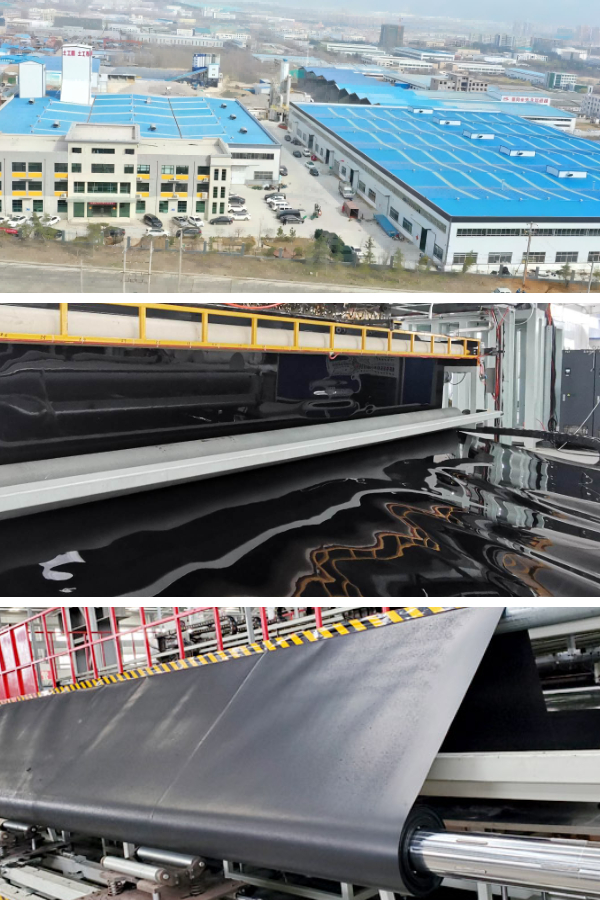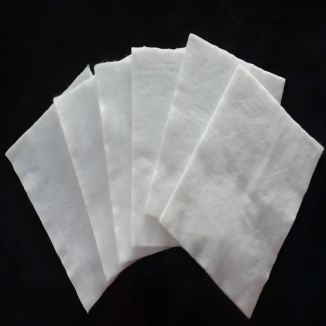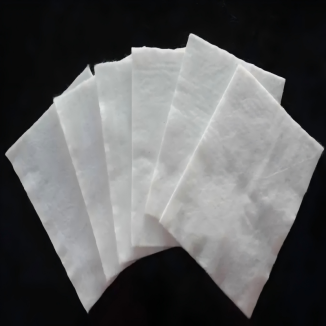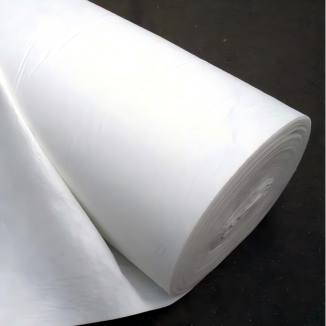Environmental Benefits of HDPE Geomembrane: A Green Choice for Sustainable Engineering
Sustainable engineering needs substances that stability overall performance with environmental responsibility—and HDPE Geomembrane stands out as a chief in this space. As a high-density polyethylene Geomembrane, it grants exceptional anti-seepage, durability, and versatility whilst minimizing ecological impact. From water conservation tasks to air pollution remediation, HDPE Geomembrane has emerge as a go-to answer for engineers aiming to limit environmental footprints except compromising structural integrity. This article explores 4 key environmental advantages that make HDPE Geomembrane a inexperienced cornerstone of cutting-edge engineering.
1. Superior Water Conservation: Minimizing Waste with HDPE Geomembrane’s Impermeability
Water shortage is a world crisis, and engineering substances that retain this fundamental useful resource are greater vital than ever. HDPE Geomembrane addresses this project thru its notable impermeability—boasting a hydraulic conductivity as low as 1×10⁻¹² cm/s, some distance exceeding usual substances like clay or concrete. This property makes it crucial for purposes the place water loss ought to be eliminated, at once boosting environmental sustainability.
In agricultural settings, HDPE Geomembrane strains irrigation ponds and canals, lowering seepage losses via up to 90% in contrast to unlined systems. For arid regions, this interprets to tens of millions of gallons of saved freshwater annually, assisting crop yields whilst easing strain on groundwater reserves. Municipal water storage amenities additionally be counted on Geomembrane technology: lined reservoirs stop water from leaching into surrounding soil, making sure dealt with water stays handy for communities as a substitute than being wasted. Even in stormwater management, HDPE Geomembrane -lined detention basins seize and hold rainwater, lowering runoff and replenishing aquifers—a vital step in mitigating drought impacts.
Unlike clay liners, which require tremendous excavation and regularly fail due to cracking or root intrusion, HDPE Geomembrane keeps its impermeability for decades. Its flexibility adapts to soil movement, warding off leaks that waste water and disrupt ecosystems. By prioritizing water retention, HDPE Geomembrane turns engineering initiatives into energetic contributors to water conservation efforts.
2. Pollution Prevention: Shielding Ecosystems from Contaminant Migration
Industrial and waste administration initiatives pose full-size air pollution dangers to soil, groundwater, and floor water—risks that HDPE Geomembrane is engineered to neutralize. As a sturdy barrier, it prevents dangerous elements from migrating into touchy environments, making it a non-negotiable issue of eco-friendly engineering designs.
Landfills are a top instance of HDPE Geomembrane’s pollution-fighting role. Modern landfill liners use a couple of layers of Geomembrane blended with geotextiles to incorporate leachate—the poisonous liquid shaped by using decomposing waste. This liner device traps heavy metals, pesticides, and natural contaminants, stopping them from seeping into groundwater that substances consuming water or nourishes vegetation. Studies exhibit that landfills lined with HDPE Geomembrane have a 99.9% discount in contaminant leakage in contrast to unlined sites. Similarly, industrial storage services for chemicals, oils, or fertilizers use HDPE Geomembrane as secondary containment: if most important tanks fail, the Geomembrane trap basin incorporates spills, heading off soil and water air pollution that can persist for generations.
Mining operations, regularly criticized for environmental harm, additionally advantage from HDPE Geomembrane. It traces tailings ponds to forestall heavy metal-laden wastewater from getting into rivers and streams, defending aquatic lifestyles and downstream communities. The material’s resistance to chemical degradation ensures it stands up to harsh mining byproducts, preserving its barrier feature for 50+ years. By blocking off contaminant migration, HDPE Geomembrane transforms high-risk initiatives into environmentally accountable ones.
3. Ecosystem Restoration: Supporting Habitat Recovery with HDPE Geomembrane
Sustainable engineering isn’t simply about minimizing harm—it’s about restoring broken ecosystems. HDPE Geomembrane performs a pivotal position in habitat restoration projects, offering a steady basis for ecological recuperation whilst fending off similarly disruption to fragile environments.
Wetland restoration is a key software the place HDPE Geomembrane excels. Wetlands act as herbal water filters and biodiversity hotspots, however many have been degraded by using agriculture or urbanization. Engineers use Geomembrane to create managed wetland basins: the liner regulates water levels, mimicking herbal hydrology whilst stopping soil erosion. For example, in coastal wetland projects, HDPE Geomembrane varieties mild slopes that help the increase of native grasses and mangroves, which in flip supply refuge for fish, birds, and invertebrates. The material’s inert nature ensures it doesn’t leach chemical substances into the wetland, keeping water fine for touchy species.
Mine reclamation is any other location the place HDPE Geomembrane drives restoration. Abandoned mines regularly go through from acid mine drainage and soil degradation, making vegetation boom almost impossible. By lining mine pits with HDPE Geomembrane, engineers create a barrier between poisonous substrates and floor soil. They then add nutrient-rich topsoil and native plant seeds, permitting vegetation to take root and stabilize the land. Over time, these restored websites come to be meadows, forests, or flora and fauna habitats—turning industrial scars into thriving ecosystems. Unlike transient restoration measures, HDPE Geomembrane’s sturdiness ensures restored habitats continue to be attainable for decades.
4. Low Carbon Footprint & Recyclability: HDPE Geomembrane’s Circular Economy Advantage
True environmental sustainability requires substances that limit lifecycle impacts—and HDPE Geomembrane supplies on this the front via its low carbon footprint and excessive recyclability, aligning with round economic system principles.
The manufacturing of HDPE Geomembrane is a long way greater energy-efficient than that of usual substances like concrete or asphalt. HDPE resin requires 70% much less power to produce than concrete per rectangular meter, and its light-weight nature reduces transportation emissions—critical for large-scale tasks the place cloth hauling contributes extensively to carbon footprints. Additionally, HDPE Geomembrane’s sturdiness capacity fewer replacements over time: a single Geomembrane set up can remaining 50+ years, in contrast to 10-15 years for clay liners. This sturdiness cuts down on the electricity and sources wanted for established repairs and replacements, in addition decreasing lifecycle emissions.
Recyclability is every other key inexperienced attribute of HDPE Geomembrane. At the cease of its carrier life, the fabric can be collected, cleaned, and melted down to produce new Geomembrane sheets or different HDPE products—diverting waste from landfills and decreasing the want for virgin plastic production. Many producers now provide recycled HDPE Geomembrane made from post-consumer or post-industrial waste, which has a 40% decrease carbon footprint than virgin HDPE versions. This closed-loop machine ensures HDPE Geomembrane doesn’t come to be a supply of plastic pollution, as a substitute contributing to a extra sustainable furnish chain.
Conclusion: HDPE Geomembrane—The Green Backbone of Sustainable Engineering
From conserving freshwater to restoring ecosystems, HDPE Geomembrane proves that high-performance engineering and environmental duty can go hand in hand. Its impermeability, chemical resistance, durability, and recyclability make it a gold standard inexperienced choice to common materials, addressing some of the most urgent environmental challenges of our time. Whether used in water storage, air pollution control, habitat restoration, or low-carbon projects, Geomembrane technological know-how promises long-term price whilst defending the planet.
For engineers, contractors, and challenge managers dedicated to sustainability, HDPE Geomembrane isn’t simply a fabric choice—it’s a declaration of environmental stewardship. By integrating this versatile Geomembrane into your subsequent project, you’ll no longer solely meet overall performance desires however additionally make contributions to a greater sustainable future for generations to come.
Contact Us
Company Name: Shandong Chuangwei New Materials Co., LTD
Contact Person :Jaden Sylvan
Contact Number :+86 19305485668
WhatsApp:+86 19305485668
Enterprise Email: cggeosynthetics@gmail.com
Enterprise Address: Entrepreneurship Park, Dayue District, Tai 'an City,
Shandong Province



